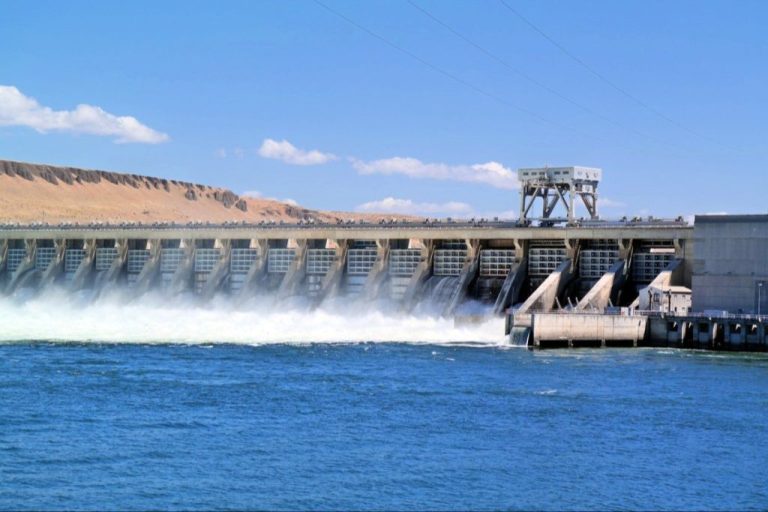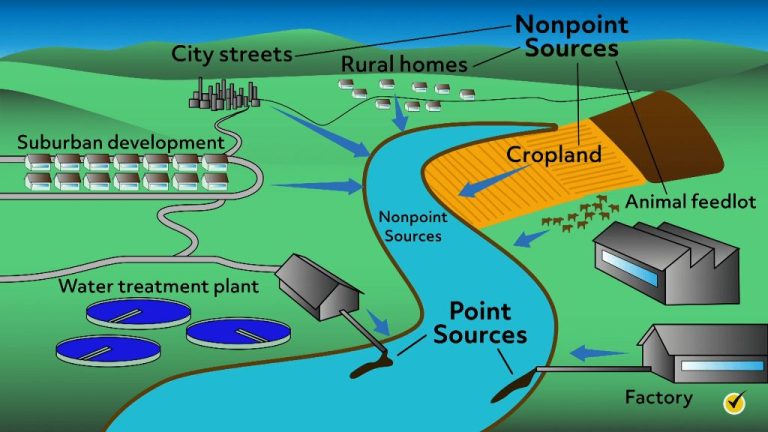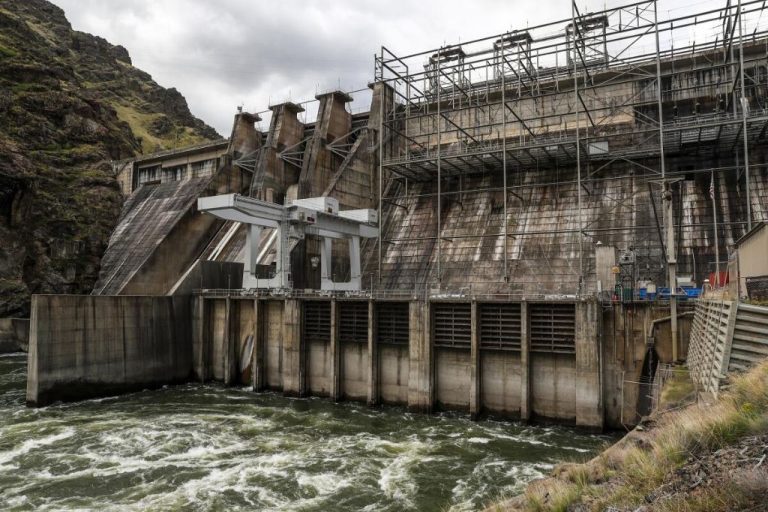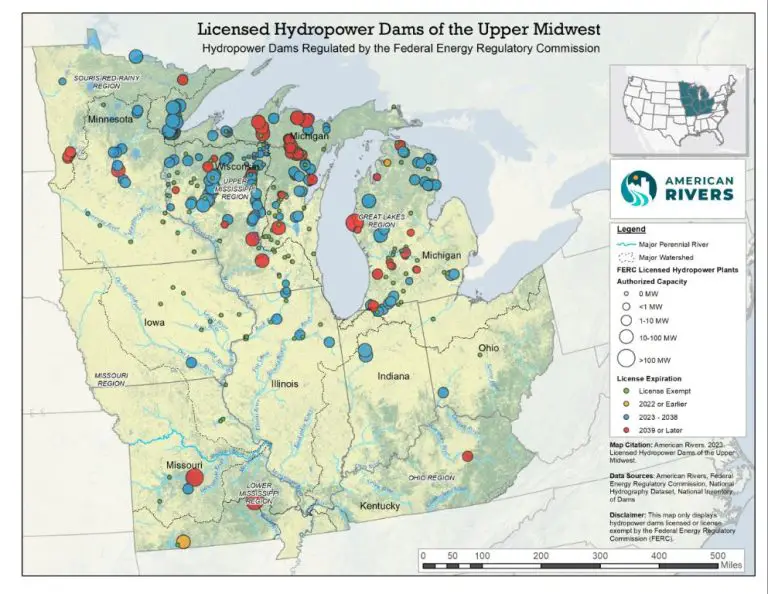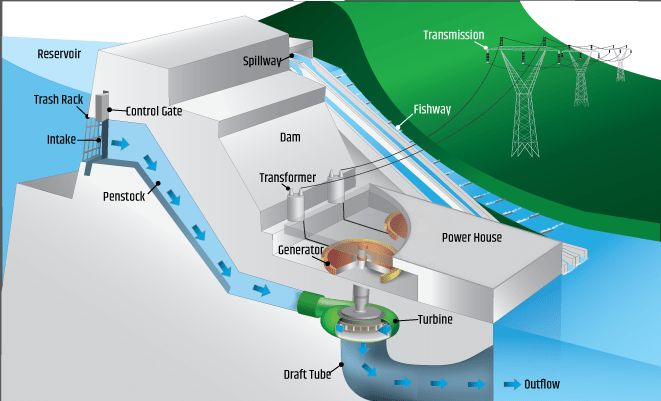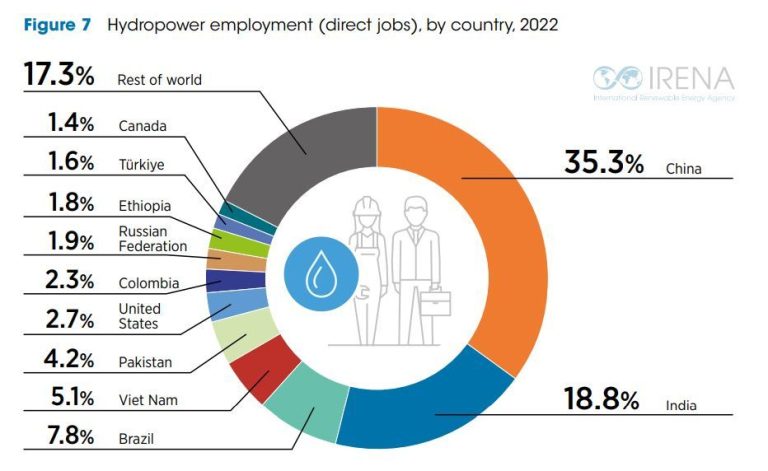What Are The Benefits Of Hydropower In China?
Hydropower is an important renewable energy source in China’s energy mix. As the country with the largest hydropower capacity in the world, China generated over 1,200 TWh of hydropower in 2020, accounting for around 16% of its total electricity production. Hydropower helps China meet its growing energy demands in a cleaner and more sustainable way. In this article, we will discuss some of the main benefits that hydropower provides for China, including abundant supply, emissions reduction, energy security, low costs, grid stability, flood control, and economic development in remote regions. However, hydropower also faces some challenges in China which will be briefly covered. Overall, hydropower plays a vital role in China’s renewable energy landscape now and into the future.
Abundant Resource
China has abundant hydropower resources with tremendous potential capacity. According to Wikipedia, China’s potential hydropower capacity is estimated at up to 400 GW. The country’s major rivers and variable terrain provide ideal conditions for hydropower generation. The southwestern provinces of Sichuan and Yunnan have the greatest installed capacity of hydropower in China. In 2019, Sichuan had an installed hydro capacity of 142 GW and Yunnan had 62 GW, according to Statista. These two provinces have plentiful water resources from major rivers like the Yangtze and Mekong. Yunnan in particular has a mountainous landscape suited for building dams and hydropower stations. With China’s vast rivers and water resources, hydropower will continue being a vital part of the country’s renewable energy mix.
Clean Energy
Hydropower plays a critical role in reducing China’s greenhouse gas emissions and air pollution compared to fossil fuels. As the country’s largest renewable energy source, hydropower produced over 1.2 trillion kWh in 2020, meeting 16% of China’s electricity demand. Unlike coal and natural gas, hydropower does not directly emit greenhouse gases like carbon dioxide or air pollutants like sulfur dioxide and particulate matter.
Fossil fuels accounted for 64% of China’s energy mix in 2020. This heavy reliance on coal and other fossil fuels for power generation makes China the world’s largest emitter of carbon dioxide, contributing around 28% of global emissions. Air pollution is also a major public health issue, with smog and particulate matter causing over 1 million premature deaths annually.
Hydropower offers a clean, renewable alternative to coal and natural gas for baseload power generation. Each kilowatt-hour of electricity from hydropower avoids roughly 1 kg of carbon dioxide emissions compared to coal. As China continues to expand its hydropower capacity, particularly in the nation’s south and west, it can keep reducing reliance on fossil fuels and make progress towards its climate change and air quality goals.
Energy Security
Hydropower improves China’s energy independence and security by reducing reliance on imported fossil fuels. China has become the largest energy consumer and producer in the world, but still depends on imports for nearly 20% of its energy needs, mainly oil and natural gas (1). Developing domestic hydropower helps reduce this dependence on foreign energy sources. With abundant water resources, China has significant potential to expand hydropower capacity. According to China’s National Energy Administration, hydropower accounts for around 15% of the country’s total energy production as of 2020 (2). Further investments in hydropower can displace imported fossil fuels, improving China’s energy self-sufficiency and resilience against potential supply disruptions.
(1) https://www.eia.gov/international/analysis/country/CHN
(2) https://www.atlanticcouncil.org/blogs/energysource/chinas-energy-security-realities-and-cop27-ambitions/
Low Operating Costs
Hydropower has relatively low operating costs compared to fossil fuel power plants. Once a hydroelectric dam and power plant is constructed, the main costs are maintenance and operations. There is no need to continually purchase fuel. According to the International Renewable Energy Agency, the levelized cost of electricity from hydropower projects typically ranges from $0.02 to $0.19 per kWh, making it one of the lowest-cost sources of renewable energy (IRENA, 2012). In comparison, electricity from coal costs around $0.045 to $0.14 per kWh and natural gas around $0.05 to $0.18 per kWh (Wikipedia). The low operating costs make hydropower an economical source of renewable energy over the long term.
Grid Stability
Hydropower provides a key balancing resource for stabilizing the electrical grid with the increasing integration of variable renewable energy sources like wind and solar power. Unlike wind and solar which fluctuate based on weather conditions, hydropower can adjust output quickly to meet real-time grid demand and help maintain optimal frequency and voltage levels. As this ANL report discusses, pumped storage hydropower (PSH) is particularly valuable, acting like a giant battery that can store energy and provide rapid response services to the grid. When wind or solar output drops suddenly, PSH can ramp up within seconds or minutes to compensate. Similarly, PSH can absorb excess power and avoid curtailing renewable sources when their output exceeds demand. With demand fluctuating throughout the day while renewable supply varies, hydropower’s flexible dispatch helps balance these dynamics and maintain reliability of the overall grid.
Flood Control and Water Storage
China is commonly subjected to floods that devastate surrounding areas and cause immense damage. Hydropower reservoirs play an important role in providing flood control in China by impounding excess water during high-flow periods and releasing it during low-flow periods. Reservoirs behind dams retain varying amounts of storage capacity specifically designed for flood control. For example, the Three Gorges Dam provides flood control storage of 22 billion cubic meters, which has been effective in mitigating major floods on several occasions.
The damming of the Yangtze River by the Three Gorges project allows excess water from heavy rains to be retained rather than overflow downstream, protecting millions of people from flooding. According to the Travel China Guide, the reservoir’s flood storage capacity has reduced the frequency of major downstream flooding from once every 10 years to once every 100 years. The reservoir also refills and replenishes water supplies during dry periods.
Economic Development
Hydropower development has helped spur economic growth and job creation in rural China. Research shows the Rural Primary Electrification Program significantly promoted economic growth in hilly regions with abundant hydropower and labor resources (Lin). Access to electricity enabled the development of small businesses and industries in rural areas. Electricity also allowed agricultural processing, food storage, and other activities that increase incomes. Studies found the hydropower program increased non-agricultural employment and wages. Rural electrification helped create new opportunities outside of farming. Hydropower dams and infrastructure projects also provided construction and operation jobs, often hiring locally. Overall, access to hydropower has been an important driver of rural economic development in China.
Challenges
While hydropower provides many benefits, it also comes with some challenges. Hydropower dams and reservoirs can negatively impact the environment in several ways:
- Flooding land for a reservoir destroys forests, wildlife habitat, agricultural land, and scenic areas. It also displaces human populations.
- Dams disrupt the natural flow of rivers which affects downstream water quality, temperature, and sediment transport. This impacts fish migration and ecosystem balance.
- Reservoirs release greenhouse gases like methane and carbon dioxide due to decaying organic matter.
There are also economic challenges with hydropower projects. Large dams require substantial upfront investments and financing. Long construction times delay return on investment. Operating and maintenance costs must be factored in over the long lifespan of hydropower projects.
While hydropower brings many benefits, policymakers must carefully weigh these advantages against environmental and social costs when planning projects. Mitigation strategies, environmental impact assessments, and compensation programs can help address some of the challenges associated with hydropower development.
Conclusion
Hydropower serves a tremendous role in China. It uses one of China’s most abundant renewable resources, water, to generate large amounts of clean energy. Hydropower dams help stabilize the electrical grid by readily providing dispatchable power. They offer a relatively inexpensive form of energy with very low operating costs once constructed as compared to other options like coal and gas plants. Hydropower also provides important flood control and socioeconomic benefits. As a result, hydropower currently generates more electricity than any other energy source in China. While China does face challenges with overreliance, resettlement, and environmental impacts, hydropower will remain essential to China’s renewable energy growth, economic development, and energy security for decades to come. China’s massive hydropower potential has only begun to be tapped. With technological advances and careful planning, China can continue to expand hydropower to meet rising electricity demand in a sustainable manner.

